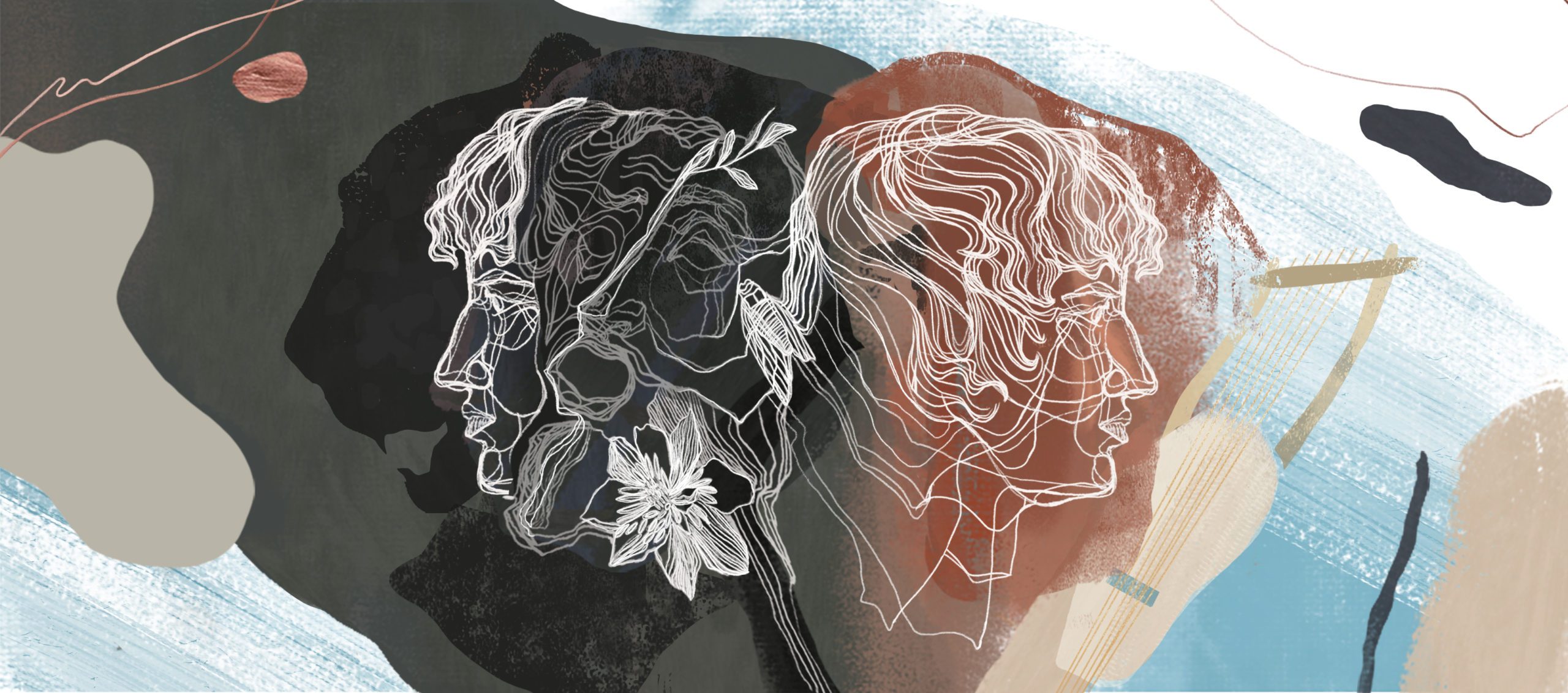(A sequel to “Phantasmagoria“) There are two different theories of dreaming. One interprets dreams according to well-established a priori categories (such as complexes) and views dreams as symptoms of the dreamer’s personal expectations and frustrations, family and social roles, etc. Conversely, the other one approaches dreams in pragmatic and heuristic manner (as in a trial-and-error…
Dreams as the Fugues of the Unconscious? On Musical Polyphony and Schizoanalytic Pragmatics
For Mahoro Murasawa and Kevin Swierkosz-Lenart I Like everything else, music is (to use a Guattarian concept) an “optional matter”; that is to say, there are many ways to organize any sound material. Take, for instance, the chromatic scale, which represents a way of classifying and gathering together a finite number of sounds, namely, twelve…
Athena’s Shield
Detail of a 1st-century Roman copy of one of the statues of Athena sculpted by Myron and housed in the Parthenon. Madrid, Prado Museum. Photograph taken by the author I “I will not turn you into stones with snake-haired terror (schlangenhaarigem Schrecken): with my shield of beauty (Schild ,Schönheit‘) I protect myself.” Thus reads one…
Moons and Monads
Like being, time is said in many different ways. A day on Venus, for instance, lasts 243 Earth days, which means that, supposing one could see a full Moon from Venus (which is not possible, as when the Moon is full it is opposite to the Sun, while Venus is closer to it), supposing one…
‘Aγχιβασίην…
In a Buddhist temple (with its elaborate architecture, the internal division of the enclosure into sections, etc.) the sacred is delimited by markedly human categories (Buddha of compassion, Buddha of wisdom, etc.), plus it is planned and organized. Conversely, a Shinto shrine (consisting of a small, red portico at the bend of a forest path,…
Picturing Thought’s Self-Reflection
Thought’s minimal gesture amounts to establishing distinctions against the background of a night in which, otherwise, all cows would be black (and not even discernible from their own shadows): a primordial chaos or, what amounts to the same, the undifferentiated unity of all things in which nothing is yet outlined. (Example of basic distinctions: everything…
Diagrams for AntiGONE
A diagram is not merely a way to illustrate something. It is rather the transformation of “content” into “form.” It therefore involves a recoding, e.g., the recoding of an idea in visual terms. The following diagrams attempt at diagramming Antigone’s rhythm, in particular the confrontation between Antigone and Creon and that between Tiresias and Creon,…
Fichte’s Structuralism
I In the introduction to his 1812 Wissenschaftslehre (WL), Fichte writes: […] Reality consists in the fact that our [noetic] seeing becomes invisible; here, conversely, it becomes visible.” “Hence,” he had formerly declared, “the difficulty of the WL: its task is to make visible what is commonly invisible to our consciousness – it thus sets…
Plato, the Real, and the Eidetic
For once, some class notes – which, from Aristotle’s writings to Fichte’s Wissenschaftslehre, Heidegger’s seminars or Deleuze’s lectures, do play a rather significant role in the history of philosophy. —— §1. Consider the following diagram: The A-circle (which is divided in two halves: A1 and A2) represents what we know. The domain of what…
Deleuze, Plato, and Zeno
I In the opening pages of The Logic of Sense, Deleuze writes: “Alice and Through the Looking-Glass involve a very special kind of things: events, pure events.” Plus, he proposes the following example: “When I say ‘Alice becomes larger,’ I mean that she becomes larger than she was” but also “smaller than she is now,”…
